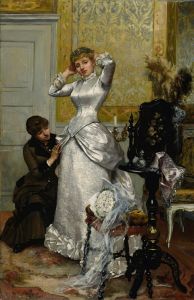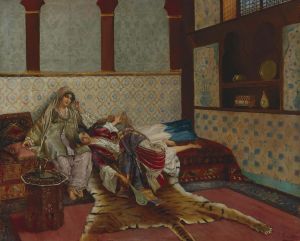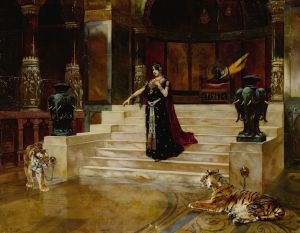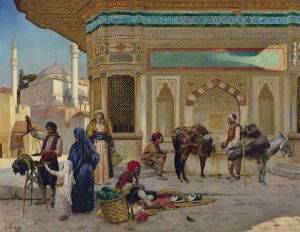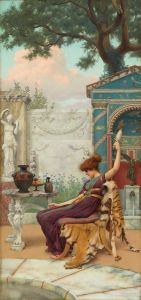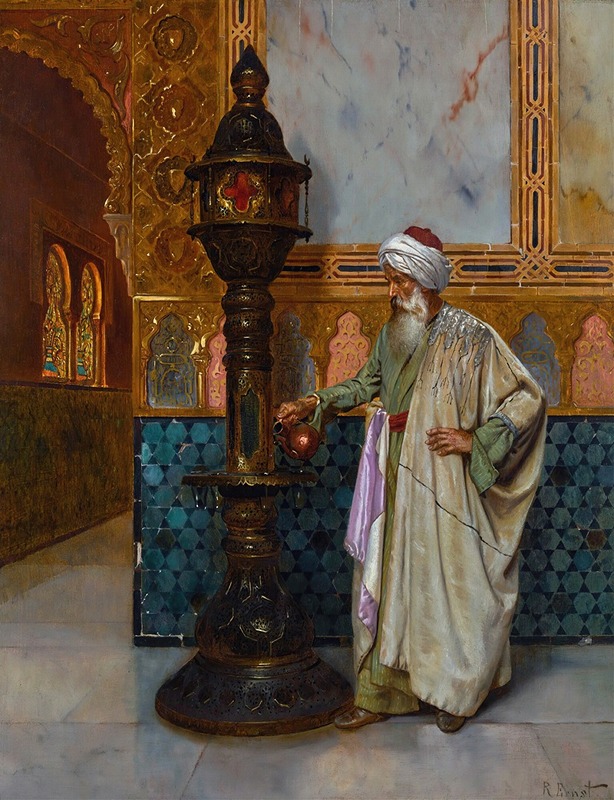
Tending The Lamp
A hand-painted replica of Rudolf Ernst’s masterpiece Tending The Lamp, meticulously crafted by professional artists to capture the true essence of the original. Each piece is created with museum-quality canvas and rare mineral pigments, carefully painted by experienced artists with delicate brushstrokes and rich, layered colors to perfectly recreate the texture of the original artwork. Unlike machine-printed reproductions, this hand-painted version brings the painting to life, infused with the artist’s emotions and skill in every stroke. Whether for personal collection or home decoration, it instantly elevates the artistic atmosphere of any space.
Rudolf Ernst was an Austrian painter known for his Orientalist works, which often depicted scenes inspired by the Middle East and North Africa. "Tending The Lamp" is one of his notable paintings, showcasing his fascination with the exotic and his meticulous attention to detail. Ernst was born in Vienna in 1854 and studied at the Academy of Fine Arts in Vienna. He later moved to Paris, where he became part of the Orientalist movement, a genre that romanticized and depicted the cultures of the East through a Western lens.
"Tending The Lamp" exemplifies Ernst's skill in capturing the intricate details and vibrant colors characteristic of Orientalist art. The painting portrays an interior scene, likely set in a Middle Eastern or North African context, featuring a figure engaged in the act of tending to an oil lamp. This subject matter reflects the daily life and domestic activities that were common themes in Orientalist paintings. Ernst's work is distinguished by its rich textures and the use of light and shadow to create a sense of depth and realism.
The composition of "Tending The Lamp" is carefully arranged to draw the viewer's eye to the central figure, who is depicted with a serene expression, focused on the task at hand. The setting is adorned with ornate patterns and luxurious fabrics, highlighting Ernst's ability to render intricate designs and his interest in the decorative arts of the regions he depicted. The use of warm tones and the play of light across the surfaces add to the painting's atmospheric quality, inviting the viewer to imagine the quiet, contemplative moment captured in the scene.
Ernst's paintings, including "Tending The Lamp," are often celebrated for their technical precision and the way they evoke a sense of wonder and curiosity about distant lands. His work reflects the broader 19th-century European interest in Orientalism, which was fueled by increased travel and exploration, as well as a fascination with the perceived exoticism of Eastern cultures. However, it is important to note that Orientalist art, including Ernst's, has been critiqued for its romanticized and sometimes stereotypical portrayals of Eastern societies, which were often based more on Western imagination than on accurate representations.
Throughout his career, Rudolf Ernst remained dedicated to the Orientalist style, producing numerous works that continue to be appreciated for their artistic merit and historical significance. His paintings are held in various private collections and museums, where they are studied and admired for their contribution to the Orientalist genre. "Tending The Lamp," like many of Ernst's works, offers a glimpse into the 19th-century European perspective on the East, capturing both the allure and the complexities of cross-cultural representation in art.





